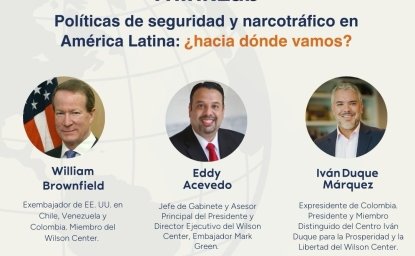U.S.-Russian Subnational Engagement: Connecting Markets and Communities

“One of the greatest resources of any nation are the individuals at the local level,” stated Reta Jo Lewis, Special Representative for Global Intergovernmental Affairs, U.S. Department of State. In her 19 November 2012 address at the Kennan Institute, Lewis discussed the valuable benefits that will come with strengthening the U.S.-Russian relationship on the subnational level.
A few days before Lewis’s presentation, the U.S. House of Representatives passed legislation that repealed the applicability of the Jackson-Vanik amendment to Russia and allowed the United States to extend permanent normal trade relations (PNTR) to Russia. Lewis applauded this action. She stated that this will greatly encourage trade and investment opportunities between the two countries. While Russia has the world’s sixth largest economy, it is only the 20th largest trading partner of the U.S. The new law will also allow for more equitable competition in the global market, with more transparency, trade rights, and accountability.
Lewis recognized that while the central governments of both countries are in a position to promote trade relations through partnerships and collaborative projects, she asserted that ultimately, it is individuals on the local level who will develop them. She noted that this includes those individuals in boardrooms and classrooms, in city council chambers and state assemblies—these are the “individuals who are assessing the needs of local stakeholders, when central governments are eclipsed by too much gridlock to act.” The greatest changes tend to occur when people tackle problems on a regional level and several localities work together as a team. This is how new ideas are shared, and the resulting experiments can eventually change communities.
When local leaders on opposite sides of the world, Lewis elaborated, observe how other communities are encouraging innovation, it can be inspirational, providing hope that might not otherwise seem realistic at the national level. Lewis described this focus on regional action as one of the defining characteristics of 21st century statecraft.
Lewis saw the enthusiastic embrace of the interregional cooperation efforts when she traveled across Russia in July 2012. She visited cities all over the country from Moscow and St. Petersburg to Yekaterinburg to Vladivostok and observed a palpable energy to build new partnerships with the U.S. There was great interest among local governmental leaders to meet with their U.S. counterparts: mayors could discuss best practices with other mayors and chambers of commerce could brainstorm new collaborative projects. The meetings were extremely productive and resulted in the preparation of the U.S.-Russia Joint Statement on Strengthening Interregional Cooperation which was signed by Secretary of State Clinton and Foreign Affairs Minister Lavrov in Vladivostok in September 2012. The new agreement will enhance commerce, culture and economic growth at the local level. This type of engagement will break new ground not only for American civic diplomacy but for cultural diplomacy as well, as it will give easier access to businesses, universities, think tanks, and state and local leaders to communicate with their counterparts and better understand Russian and American values. Applauding an existing judicial exchange between Maryland Governor Martin O’Malley and Leningrad Oblast, Lewis pointed out that this exchange will be conducted more easily than before as the new agreement will allow them to discuss key trends in the law and share best practices.
During the past three and a half years, the United States and Russia have deepened cooperation to address shared challenges. Lewis views the Joint Statement mentioned above as a signal of a “new era of government engagement where state and local leaders with inventive ideas and unchartered relationships on a local level can be one of the hallmarks of our diplomacy.”
However, Lewis added that while there is much hope for multi-regional engagement there is still much work to be done, from conducting research on how regional governments can best collaborate, to establishing specific metrics to measure success of interregional projects, and to ensure that it truly will be easier—in practice, not just on paper—to engage in business across borders.
Lewis expressed optimism for the future of U.S.-Russian relations and encouraged embracing a new paradigm for subnational engagement. She encouraged disposing of the old obstacles and suspicions and harnessing the collective voice from the local levels of both countries to get things done.
William E. Pomeranz, Acting Director, Kennan Institute
Author

Kennan Institute

Kennan Institute
The Kennan Institute is the premier US center for advanced research on Eurasia and the oldest and largest regional program at the Woodrow Wilson International Center for Scholars. The Kennan Institute is committed to improving American understanding of Russia, Ukraine, Central Asia, the South Caucasus, and the surrounding region through research and exchange. Read more

Explore More
Browse Insights & Analysis
La esencia de la infraestructura global: perspectivas del líder de la industria Matt Harris


